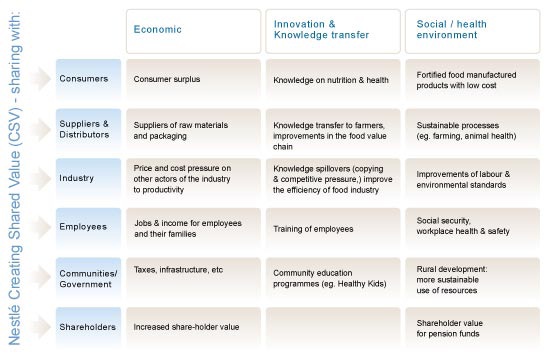While I celebrate that Customer Experience is Gaining Momentum, I believe that the intention and perception of the majority of those participating in this movement remains outdated and needs to be addressed in order to sustain and harness the untapped potential value of Customer Experience strategies.
 On the left end of the spectrum we have those that approach Customer Experience strategies as a necessary expense resulting from external pressures. On the right end, we have those that view it as an opportunity to expand profits and create shared value. I suspect that for the most part we lean heavily to the left, yet we need to head due west.
On the left end of the spectrum we have those that approach Customer Experience strategies as a necessary expense resulting from external pressures. On the right end, we have those that view it as an opportunity to expand profits and create shared value. I suspect that for the most part we lean heavily to the left, yet we need to head due west.
If you read the examples in Michael Porter and Mark Kramer’s article on Creating Shared Value through a lens of customer experience, you will inevitably be struck by the potential value you can harness with a renewed intent and perspective. They share powerful and highly repeatable examples from companies such as Google, IBM, Intel, J&J, Nestle, Unilever, and Walmart who have all begun to demonstrate the potential of shared value. We need to move beyond our short sighted strategies and recognize that businesses and customer experiences are defined far beyond our conventional perceptions.
If you dig a little deeper into the Nestle example you will find that they have injected shared value into the core of their business; into the core of their customer experience, into the core of their employee experience. Chairman and CEO, Peter Brabeck-Letmathe says:
“It is our firm belief that, for a company to be successful over time and create value for its shareholders, it must also create value for society.”
Nestle is not just claiming to do business this way, they are proving it. More importantly they are measuring their performance and reporting the results. Not just the results of the social value, the results of the economic value. Does all this impact customer experience? It sure does! This has the potential to create authentic and sustainable customer loyalty in a way we have not seen before. As a consumer, I now get very excited about buying Nestle products, let’s face it, there are a lot of brands delivering good quality food, but a brand that has holistic purpose is a massive differentiator. This matrix diagram was developed as a conceptual framework to measure a company’s overall net impact on its stakeholder groups.
Earlier this week I had the privilege of participating in a FOCUS panel discussion with Mark Kramer to discuss shared value and measuring what matters. It was a very engaging and insightful discussion. I am looking forward to many more discussions like this as I am on a passionate quest to create awareness and help today’s leaders embrace and prosper from this meaningful change.
To get started identify all of the societal needs, benefits and harms that are embedded in your customer experience. This extends beyond your products or services, it encompasses your entire value chain and the communities of your company and customers. Then explore and discover how you can address them through your customer experiences. This will unleash a new form of innovation and deep, sustainable value that will drive customer loyalty on a whole new level. I will be exploring the “how” in much more depth in a follow up post. Stay tuned!
Want more? In this BBC interview, Porter does a brilliant job of summarizing key elements of shared value with further examples, drivers and the challenges ahead to get the financial markets converted.
I suspect the momentum of the shared value movement is going to accelerate quickly, it’s a win win proposition!




Trackbacks/Pingbacks